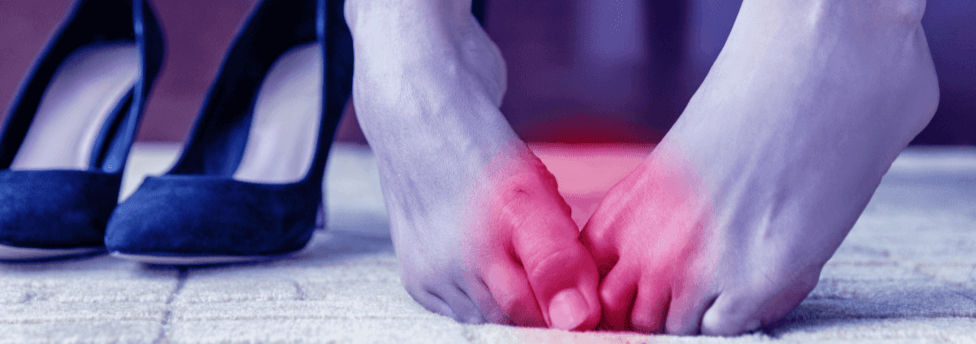
Stiff big toe, or big toe arthritis, big toe bunion, or hallux rigidus is the commonest of foot pain. In this article we explore why your big toe hurts and what you can do to treat it.
What is arthritis of the big toe?
Pain in the big toe can be a sign of gout, injury or hallux rigidus. Hallux rigidus is arthritis of the big toe in the ball of your foot. Like any form of arthritis, the shock absorbing joint surfaces wear away so that bone is rubbing on bone. The main feature is stiffness (latin “rigidus”) of the big toe (“hallux”) but it is also painful.
What causes hallux rigidus?
The big toe is a like a car jack taking a huge amount of load, heavier than several African Elephants and so unsurprisingly can wear away leading to arthritis of the big toe. It is also a very complicated joint with two pea shaped bones that sit underneath the joint and which take the brunt of your weight. Think of it a bit like an upside down knee, but you have two knee caps and all your weight is going through them.
In some people hallux rigidus is caused an injury (stubbing your toe or even breaking it when younger) or another medical problem such as gout or an infection in the joint. Sometimes it is known as a big toe bunion and the bunion itself can develop arthritis.
What are the symptoms of big toe arthritis?
The commonest problems with big toe arthritis or hallux rigidus are stiffness and pain in the big toe joint. In some people the pain is present whenever they walk or even at rest, but in others it only occurs when they turn they stand on tip toe or maximally flex up the big toe.
Bone spurs form around the joint, often as the body’s natural protective mechanism to prevent painful motion, but soft tissue gets caught in between the spurs and can hurt. The bump may rub on the shoes and in some people this is their only problem.
Because of the painful and stiff big toe some people change the way they walk, putting pressure on the side of the foot and their shoes wear on the outside.
In some patients the big toe is so stiff that all motion transfers to the lesser toes and the only symptom may be pain under the ball of the 2nd or 3rd toes. This is known as transfer metatarsalgia.
Why does hallux rigidus affect young people?
Hallux rigidus may affect people when young, possibly even in their teens. The reasons are unknown but it may be because of injury when very young or a genetic predisposition.
Fortunately, the likelihood is that your stiff big toe will not get worse rapidly and probably you are also no more likely to get arthritis in other joints, such as your hips and knees, than anyone else.
Research shows that although the joint remains arthritic and stiff, it tends not to get much worse in the majority of people. Even after 20 years the joint was much the same as it had been when the people who were studied first went to the doctor. However, in about 25% of people, the joint progressively stiffens and treatment may be required.
What self help treatments can I do for hallux rigidus?
Keep yourself fit and active. Wear shoes that comfortably fit your feet and avoid activities that stress the joint, like squatting, lunges or kicking a football. If you adapt the way you use the foot without excessively bending the big toe, your symptoms are likely to settle and may never need any more treatments.
It sometimes helps to stiffen the sole of your shoe so that it does not bend while walking. If you do this, you may need a small “rocker bar” on the sole of your shoe so that you can rock over this while walking instead of bending your toe up. You can buy rocker shoes like Sketchers or MBTs in most shops.
What surgical treatments are available for hallux rigidus?
If the toe remains very painful, a doctor may arrange for a cortisone injection into the toe and this often settles down the swelling and pain, although its important to understand that this treatment is not a cure for the underlying cause, it is merely a treatment for the symptoms.
If none of the above treatments help, an operation may be considered. There are several operations used to treat hallux rigidus. One is to remove the bone spurs in an operation called a Cheilectomy. The second is to put something into the joint to pad it out, called Cartiva, and the third is to stiffen the joint in a joint called fusion. You would need to discuss these options with an orthopaedic foot and ankle surgeon to establish which is the best treatment for your particular situation.
Did you enjoy this article? You may also like what is hallux rigidus?
